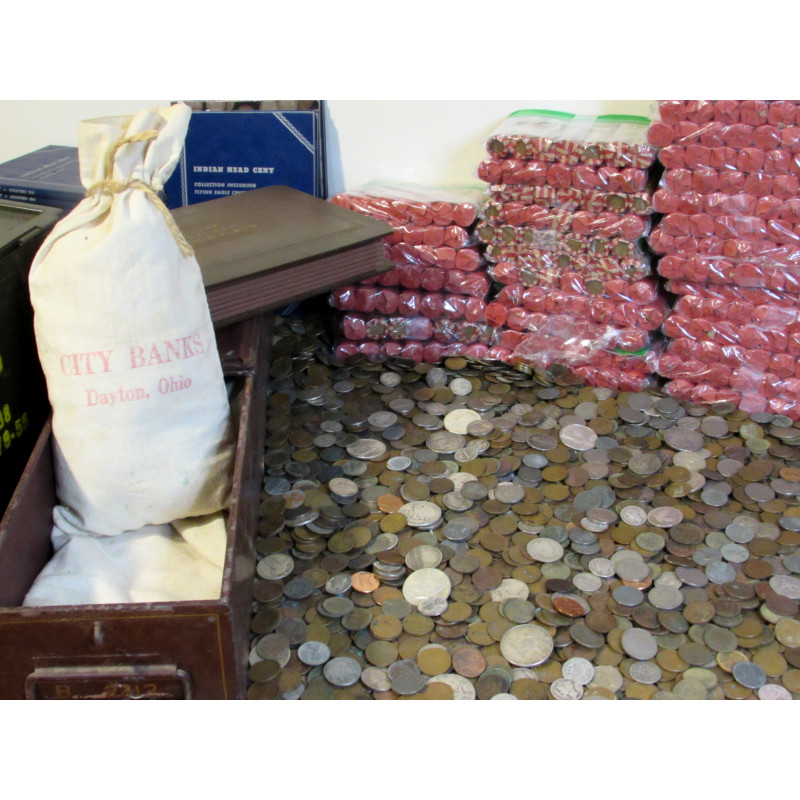

Money Metals can accommodate orders starting as small as $5 face value (10 coins). Silver half dollars are machine counted into bags when a client's order is released to be packed and shipped.

That could be important when the time comes to sell or trade them.įinally, silver junk bags are bought and sold in huge quantities and are therefore very liquid - easy to buy and easy to sell. government does instill a measure of trust and confidence. While it would be a very bad idea to spend these coins for the face value, their status as legal tender backed by the U.S. tender, albeit only for the face value of $.50. Investors can get more ounces of silver for whatever they plan to spend by choosing half dollars in favor of more expensive alternatives. The market value of "junk silver" is often very close to the actual melt value of the coins. Secondly, like bullion rounds, this form of silver offers a low premium over the spot market price of silver. First, they are significantly smaller than 1 ounce products, which makes them ideal for bartering in smaller transactions. Pre-1965 silver half dollar coins do offer several advantages. Kennedy Half Dollars Bicentennial (Dated 1776-1976) (Common date)Īre Silver Half Dollars a Good Investment? Kennedy Half Dollars Silver Clad (No rare dates) Kennedy Half Dollars Silver (Common date) The coins are delivered unsorted, with any batch containing a variety of minting dates and coin conditions. Pre-1965 half dollar silver coins are older and carry historical interest, but no additional premium is added to their price based on age, condition or collectible value.
#Bag of silver coins for sale full
715 ounces of actual silver content, so a full junk silver coin bag ($1,000 face value) contains 715 ounces of silver. So what makes these silver coins a good investment? Each dollar of face value contains. Please note: the copper content of these rare coins is excluded from any calculation of pricing. How Much is a 1964 Half Dollar Worth?Īll US silver coins struck in 1964 or earlier were minted with 90% silver and 10% copper. They have worked well to protect investors from the destruction of the fiat US dollar in the decades since politicians and central bankers abandoned the gold and silver standard that once underpinned our currency. The fiat dollar may buy dramatically less, but the purchasing power of silver has held up very well. Today, these coins have a value which is still roughly equivalent to that amount of gas. Americans buying gas in 1964 could have purchased 1.667 gallons of gasoline for fifty cents - the face value of one of these coins. Silver Kennedy half dollars, the Franklin half dollar, and Liberty half dollars are the variety these half dollars come in and an excellent store of value. 90% US silver half dollars are anything but "junk", despite being referred to that way.

Preparedness minded investors consider official, recognizable US coins in smaller sizes ideal for use in barter. 358 ounces of actual silver content, are also much smaller than the 1-ounce American Eagles. They are very popular because they often cost less than other US bullion coins such as US Silver Eagles. Today these coins are widely traded by bullion dealers. Making the coin prices on "junk" silver more appealing to buyers more interested in the silver content, versus the condition of the coin. Coin dealers applied the term to distinguish this circulated coinage with no collectible value from more collectible coins they wanted to sell at higher prices. Savvy people began pulling these coins from circulation and trading them at dollar values based on their silver content. The term "junk" silver developed in the 1970s. These coins, along with Pre-1965 dimes and quarters, are commonly referred to as "junk" silver, or 90% silver. One of the most popular ways to invest in silver bullion coins is buying circulated US half dollars minted prior to 1965.


 0 kommentar(er)
0 kommentar(er)
